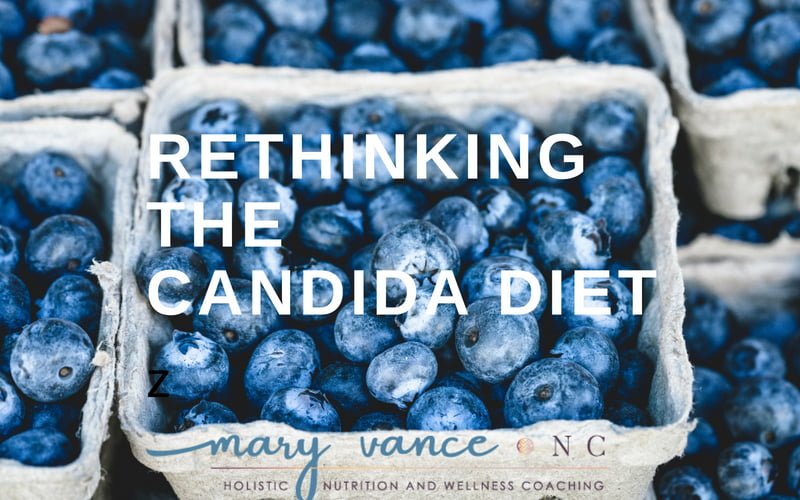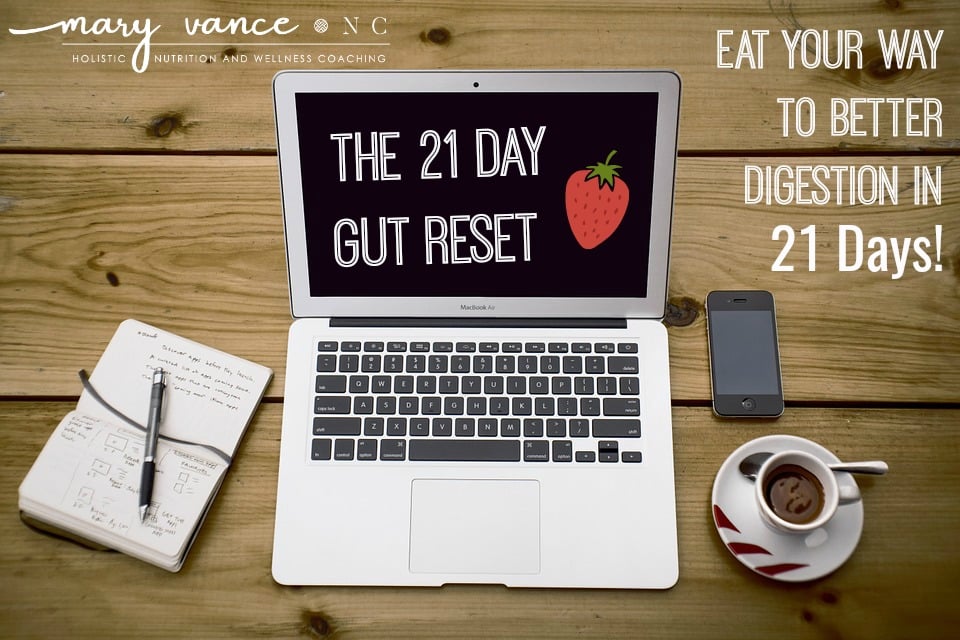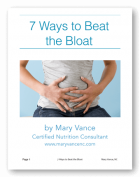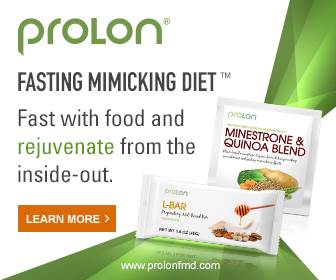If you’ve done any research on the candida diet, you’ll come up with about 19 million results on google, most of which tell you to avoid every molecule of sugar. Some of the diets recommend phases or even bone broth cleanses. There are millions (literally) of recommendations for the candida diet, and most of them are basing their recommendations off faulty science. Add to that: diet alone will not defeat candida.
There are some major problems with the traditional candida diet. So what’s the best diet for candida?
What is Candida?
Candida is a type of yeast that is commonly found both on and in the human body, where it generally causes no problems. It’s normal and even beneficial when your immune system and gut bacteria keep it in check. Candida is present in your digestive tract, mouth, and on your skin.
There are 20+ types of candida, and candida albicans is the most common and the strain about which we hear the most. Everyone has candida in their bodies, and it’s not a bad thing. In fact, it exists in harmony with our beneficial bacteria and even strengthens the immune system under normal conditions. But when it begins to grow unchecked, symptoms result, and candida overgrowth can cause vaginal yeast infections, digestive issues, inflammation, leaky gut, and oral thrush. Read my other post for candida symptoms and more info.
Common causes of candida are
- overuse of antibiotics, which kill beneficial bacteria and allow yeast to thrive
- nutrient poor diet (deficiencies may cause or contribute to candida)
- certain drugs and meds
- birth control pills
- stress
- diabetes/high blood sugar
- estrogen dominance
The most common causes I see are nutrient deficiencies, birth control pills, and antibiotic use. Weakened immunity also contributes to chronic candidiasis, and candida weakens the immune system. Vicious cycle. Women most often notice chronic yeast infections or discharge, but candida also causes a number of digestive symptoms like bloating and belching.
What is the Candida Diet?
Candida needs moisture and sugar to thrive once overgrowth has been established. The human body is a perfect substrate for candida growth, as it supplies both of these things. The idea behind the candida diet is that if you starve the yeast overgrowth by restricting its food supply, it will die. Easy, right? Well, in theory sure, but that’s not exactly how it works.
Here are the general candida diet guidelines for foods to avoid:
- avoid sugar in all forms
- some say no fruit at all; some say small amounts of low sugar fruit allowed
- no junk food, processed food, especially white flour, baked goods, etc
- no gluten
- no dairy
- no starchy vegetables
- no alcohol or soda
You’re told to focus on organic protein, eggs, gluten free grains, nuts & seeds, non starchy veggies, and healthy fats mainly. It’s an anti-inflammatory diet, and that is a benefit.
But there are also a lot of contradicting guidelines. Some say no fermented foods; others say load up. Some say no grains; others say gluten free grains are fine. Some say no vinegar at all; others say apple cider vinegar keeps yeast population in control. Some say no coffee or caffeine; others say black coffee and/or green tea are fine. So it gets confusing. I know how confusing it is because I work with confused people regularly.
Part of the confusion, I think, stems from the fact that there is no single diet that will be right for everyone. This is true in treating candida also. One person’s gut healing, candida killing diet is going to look different from another’s. But there are some inherent problems with the traditional candida diet, the least of which is that it’s very restrictive and difficult for people to stick to.
I should mention that before you embark on any diet or supplement protocol to treat whatever you think is the problem, TEST to make sure the problem is what you think it is! I run stool testing with my clients who have GI symptoms or issues. An interesting point to consider is many of these folks have self-diagnosed with candida when it’s not actually the main problem. They may have another fungal species and/or dysbiotic strains of bacteria that are causing yeast-like symptoms, which is why it’s so important to test. They’ll do the diet and herbs for weeks and weeks and may feel some improvement until they stop, then their symptoms return. They could have SIBO, SIFO, citrobacter (one that can also cause hefty GI issues), h pylori, or general dysbiosis. That’s why it’s so important to test and/or work with someone who can help you identify the problem.
That said, the traditional candida diet (or any diet) alone will not kill candida. You have to pair the diet with anti-microbial herbs to kill it effectively. Secondly, the candida diet does not address the underlying causes of why the yeast proliferated in the first place. This is why I see so many people with chronic, recurrent yeast. There are usually gut problems already present that allow candida to take hold and grow out of control, such as
- leaky gut
- poor bacterial diversity in the gut: not enough of the good guys to keep the bad guys in check
- estrogen dominance: excess estrogen feeds yeast
- diabetes or high blood sugar
- other pathogenic or bacterial infections in the gut: candida can grow outside of normal levels in response to other pathogens
These issues can be exacerbated by (or in some cases caused by) antibiotics, hormonal birth control, and the others I mentioned above.
One thing that I’ve noticed in my years of clinical practice is that time and time again, I’d hear that as soon as people go off their anti-candida diet and have one piece of fruit or anything with sugar, their symptoms would flare. These people would be religiously sticking to the traditional candida diet, and they’d done the anti-fungal protocols, but they weren’t kicking the yeast and they weren’t getting better. Why not?
Problems with the Candida Diet
1 The traditional candida diet does not heal the gut. My first point here is that the traditional anti-candida diet still allows grains. If you have a gut damaged by candida overgrowth or any other gut infection, your gut is inflamed, and grains can be major irritants that will retard healing. Grains are polysaccharide starches that are difficult for a compromised small intestine to break down. This increases leaky gut and also injures the walls of the large intestine as food particles pass from the small intestine into the large intestine and become food for yeast and bacteria. Impaired digestion leads to bacterial overgrowth and worsens candida, which emit aldehydes (the same compound that’s produced when you drink alcohol) that further damage the gut, make it more permeable, and overwhelm the liver detox pathways. Potatoes are another polysaccharide starch. You need to avoid both in order to heal and seal the gut and improve the terrain so candida won’t flourish. (source, another source, yet another source).
2 It is impossible to eliminate all forms of sugar unless you subsist on meat and fat only. This one really bugs me. The main tenant of the candida diet is to remove sugar because that’s candida’s main fuel source. First off, sugar does not CAUSE candidiasis! Read that again. Once candida overgrowth is established, sugar will absolutely exacerbate symptoms, but sugar alone does not cause yeast overgrowth.
Starchy vegetables like carrots, beets, and potatoes are also eliminated because of their sugar content. But every single thing that is not a protein or a fat that you eat (carbs) breaks down into sugar eventually, so allowing any carbs in theory is faulty logic. All vegetables eventually break down into sugars. Grains break down into sugars! Yet grains are allowed, but fruit is not? Yes, you absolutely should avoid added refined sugar, soda, and alcohol, because those sugars damage the gut. But you don’t need to remove vegetables like carrots, for example, or blueberries, both of which offer health and immune benefits. I should add, of course, that if you have SIBO or SIFO, you may not be able to tolerate the higher FODMAP veggies like alliums, asparagus, artichoke, to name a few.
3 A very low carb diet can make people feel worse and potentially damage your metabolism. Many people feel great initially when they start an anti-candida diet because they’re avoiding processed foods, sugars, and junk. And that alone is a good thing. But removing all sugars or going too low carb by removing all grains and starches can slow thyroid hormone production and make you feel sluggish (and potentially cause hypothyroid symptoms). Additionally if you’ve removed all grains and all starches, you’re probably in ketosis, and there are studies that show that neutrophils, which are white blood cells, are less able to kill Candida when ketones are present. (source) So this idea of a zero carb diet to kill candida could backfire in some people.
What is the Best Diet for Candida?
The candida diet I recommend is a basic gut healing diet, similar to the specific carbohydrate diet:
- remove inflammatory foods like dairy, junk food, sugar, booze, soda
- remove polysaccharide starches like grains and potatoes (may not be necessary for everyone, only if you experience frequent bloating)
- avoid high sugar fruit. Berries and green apple (low glycemic) OK in moderation, 1 serving daily
- include whatever amounts of organic animal proteins, eggs, wild fish work for you
- plenty of good fats like coconut oil, olive oil, avocado
- no added sweeteners, sugar, maple syrup, honey. Try Zen Sweet monkfruit sweetener.
- whatever vegetables you can handle; focus on the leafy greens and cruciferous. OK starches include butternut, celery root, spaghetti squash, carrots, beets. Basically everything except potatoes of all types. If you can’t handle any starches, you may have SIBO. Consider testing for SIBO.
- some people may be able to get away with legumes such as lentils. Others may not.
- I recommend ditching the coffee temporarily. Drink green or herbal teas, like Pau d’Arco, instead.
- Use apple cider vinegar daily in water: 1 tsp to an ounce or so before meals.
Note that you should NOT do a restrictive diet longer than 8 weeks before reintroducing foods.
This is a basic elimination diet. In my Candida MasterClass, I guide students through this elimination diet and teach them how to reintroduce foods to determine which foods are they can’t tolerate and that may be causing gut inflammation.
Again, these are GUIDELINES. I design a personalized diet for each and every person, and literally every candida diet I recommend to a client looks different. Sometimes I recommend a more low FODMAP direction; some people need to go more low carb/low sugar; others need to add in more carb. Some people can’t handle any fermented foods, probably due to the histamine, others may do fine with it. If you have an autoimmune condition, you may need to remove nightshades, nuts, seeds, eggs, and other potential gut irritants.
Most importantly, in order to get Candida overgrowth under control, it is critical to harmonize the inner ecology of the gut. You don’t need to wipe out candida entirely, but rather encourage balance between the good and bad bacteria with probiotic therapy and food. An anti-inflammatory diet is critical for this. Good bacteria living in the gut work in partnership with your immune system, keeping candida overgrowth in check. So after you take the herbs and knock out the overgrowth, it’s critical to finish healing the gut. This is one step people miss.
What have you found to be most successful in overcoming candida overgrowth?
Don’t forget to check out my training videos on the 3 secrets you need to know for kicking candida!
Pin it!

Mary Vance is a Certified Nutrition Consultant and author specializing in digestive health. She combines a science-based approach with natural therapies to rebalance the body. In addition to her 1:1 coaching, she offers courses to help you heal your gut and improve your health. Mary lives in San Francisco and Lake Tahoe in Northern California. Read more about her coaching practice here and her background here.









Do you recommend starches like lotus root and cassava as safe starches to your clients, or are those generally best avoided?
Hi Rebekah, I usually have people avoid the most difficult to digest starches: potato, parsnip, tapioca, arrowroot, cassava. Lotus root may be ok.
Can you eat nuts like almonds and almond flour
Taffy, if you’re not sensitive to nuts (they don’t cause GI symptoms like bloating, irritation), they’re fine.
how do you feel about buckwheat and quinoa?
Elana, those 2 are out for gut healing. You will see them as part of traditional candida diets, but they can irritate an inflamed gut and worsen leaky gut which perpetuates candida.
I’m unclear on your stance on sweet potatoes. Are they an okay option to help maintain SOME carbohydrates and stay out of ketosis?
Carrie, if you can tolerate them, sweet potatoes would be fine. They cause gas & bloating in many people with leaky gut or small intestine inflammation/SIBO. If you have a lot of gas & bloating after cutting out gluten/grains and dairy, it’s a good idea to cut potatoes for a while to determine if they’re the culprit.
What do you recommend for someone with candida and also has symptoms of hypoglycemia?
Michael, you’ll need to be more engaged with blood sugar balance in terms of eating in regular intervals and making sure you get enough protein and fat. You can think modified ketogenic. There are also minerals you can take the support blood sugar balance: https://www.maryvancenc.com/how-to-prevent-the-hangry/
I’m confused on what carbs are ok? I was doing the popular candida diet, but there’s so many conflicting things. No quinoa or buckwheat? What carbs ARE ok so you don’t go into Ketostis?
Amber, the diet guidelines for carbs are all laid out in the post under the ‘what is the best diet for candida’ heading. Carbs are not limited to grains– all vegetables and fruits are carbohydrates, and I specify which ones are best in the post. The diet will vary from person to person depending on how damaged your gut is + what foods you can tolerate.
I am not sure what guidelines to follow. I have had recent allergy testing and it came back that I allergic to yeast and dairy. Additionally, I previously tested four years ago to be intolerant ( very) to gluten, wheat, soy. I haven’t eaten grains or sugar for years now. I came to be retested based on symptoms of feeling drunk and disoriented. After Mri etc, it was the allergy testing that led to a partial solution. Do I need to treat yeast allergy like Candida overgrowth?
Roj, no, there’s no way to “treat” an allergy other than healing the gut to see if that helps (some are in-born and never go away). You can do a stool test to check for candida.
Is fresh corn on the cob okay on the candida diet?
Donna, no, ideally you need to avoid grains.
Hello Mary, I have been dealing with yeast issues for about 3 years already. I’ve seen many doctors and taken every meds you can think of. I’ve been on a strict diet for 2 months and it still hasn’t been cured. I’ve lost a lot of weight and I’m still having the same symptoms. Can you please help me?
Hi Julia, YES! Check out my 6 week candida course: https://www.maryvancenc.com/kick-candida-masterclass/
It would be perfect for you, and you still get to work with me live; you’ll just save a lot of money in the process 🙂
What is suggested for people with pcos and also have a yeast overgrowth problem? I am not diagnosed with candida, but I have had yeast issues constantly for a few years. I noticed that many of my symptoms of pcos are also symptoms of Candida.
Courtney, hormonal issues (estrogen dominance in particular) can cause candida overgrowth. You would need to address the hormonal imbalance to make sure the yeast doesn’t recur.
is this anything like a SIBO Diet
Hi Barbara, while the SIBO and candida diets have similarities, SIBO is a low fermentable diet (excludes fermentable starches) while candida diet removes sugars and gut irritants. However, each person’s diet looks a bit different depending on their unique needs.
What would you recommend for me if I am… 1. Have perioral dermatitis 2. Breastfeeding/7mo postpartum 3. Vegan 4. IgG test came back positive for Yeast, Coffee and Wheat (not gluten) 5. Eat gf oats multiple times a day bc they are inexpensive, quick and filling. 6. Cave anytime there’s sweets in front of me.
Hi Shannon, I’d recommend working with someone who can help design a personalized protocol for you, especially if you are postpartum and vegan. It’s vital to get enough calories and the proper nutrients to support breast feeding.
Is nutritional yeast okay to consume on the candida diet?
Kacey, there’s a lot of conflicting info on whether nutritional yeast is OK. I think it can worsen yeast symptoms in some people (similar to fermented foods), so best to avoid during treatment.
When do you know to go from the Starve It stage to the Kill it Stage? Is there a timeline or signs?
Hi Michelle, I typically have people start their gut healing diet at least 2 weeks prior to starting the herbs to kill candida. You want to find a diet that reduces your digestive symptoms as much as possible (though some symptoms are likely to be caused by candida, so 100% reduction in symptoms may not be possible via diet alone). Sometimes this may take a month.
Is watermelon okay for candida diet. Will almost milk and coconut milk be okay?
Chitra, watermelon is pretty high sugar. Low glycemic fruits are best. Coconut and almond milk are usually fine unless you react to the gums/thickeners.
I really enjoyed your article. I’ve struggled with recurring yeast infections since I was a teenager. I used to get them monthly, now I only get them every few months. I’ve been fighting a yeast infection for 3 weeks after taking an emergency contraceptive. In general, I also struggle greatly with hormonal weight gain, even though I exercise often and eat mostly clean, so I imagine I have a long-standing gut issue somewhere. I often drink yogurt kefir, but there are no more yummy options. Do you have any probiotic supplement recommendations to replace the dairy kefir and to keep my yeast infections tolerable?
Hi Rebecca, for yeast I recommend saccharomyces boulardii and a broad spectrum probiotic, but the brand depends on the person. This article may help: https://www.maryvancenc.com/take-probiotics/
If you struggle with recurrent yeast, check out my self study candida masterclass. It’s specifically designed for those with recurrent candida and focuses on healing the gut so it doesn’t return. https://www.maryvancenc.com/kick-candida-masterclass/
I have been a vegan for 5 years and would like to go on this plan as I have been diagnosed with candida and food intolerances on many things I was eating on a vergan diet. Can you help me?
Hi Julie, please apply to work with me here: https://www.maryvancenc.com/apply-to-work-with-mary/
and we can schedule a call to see if we’re a good fit to work together.
I am struggling with my health for almost 2 years now due extreme stress.
Candida, inflammation in the gut.
I tried everything… nothing helps. Now candida is on his worst and don’t know what to do anymore.
Can i eat fermented Yoghurt? I am making yoghurt with L. Gasseri & L Reuteri. Also can i drink Milkkefir?
Hi Jochen, I can’t make specific dietary recs for you unless you are a client of mine and I know your health history. Some people do need probiotics during candida treatment; in other cases it can make people feel worse. check out my candida course for more support: https://www.maryvancenc.com/kick-candida-masterclass/
hi is dragon fruit ok eat if u have. candida and sibo